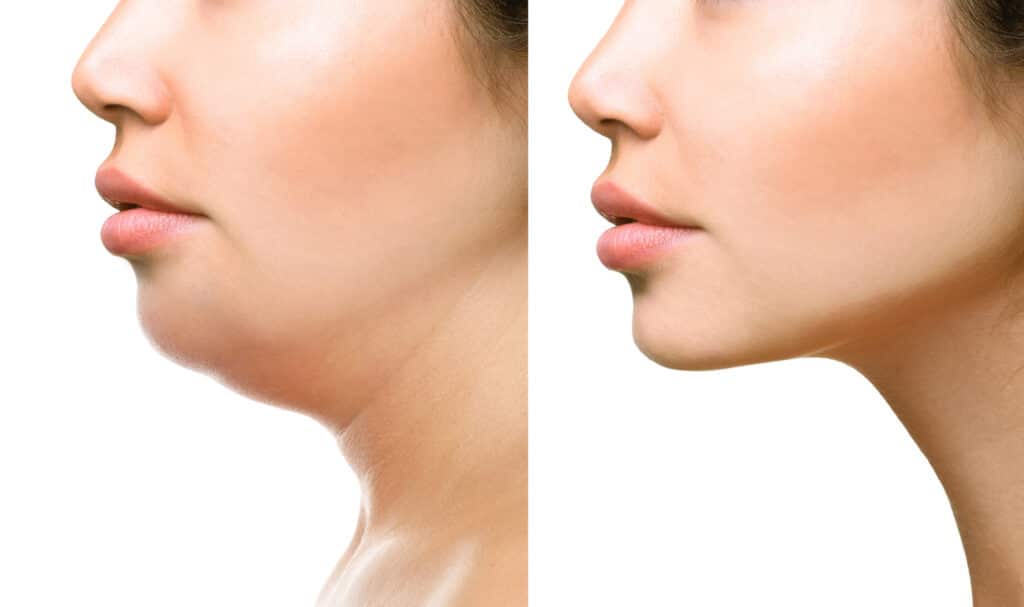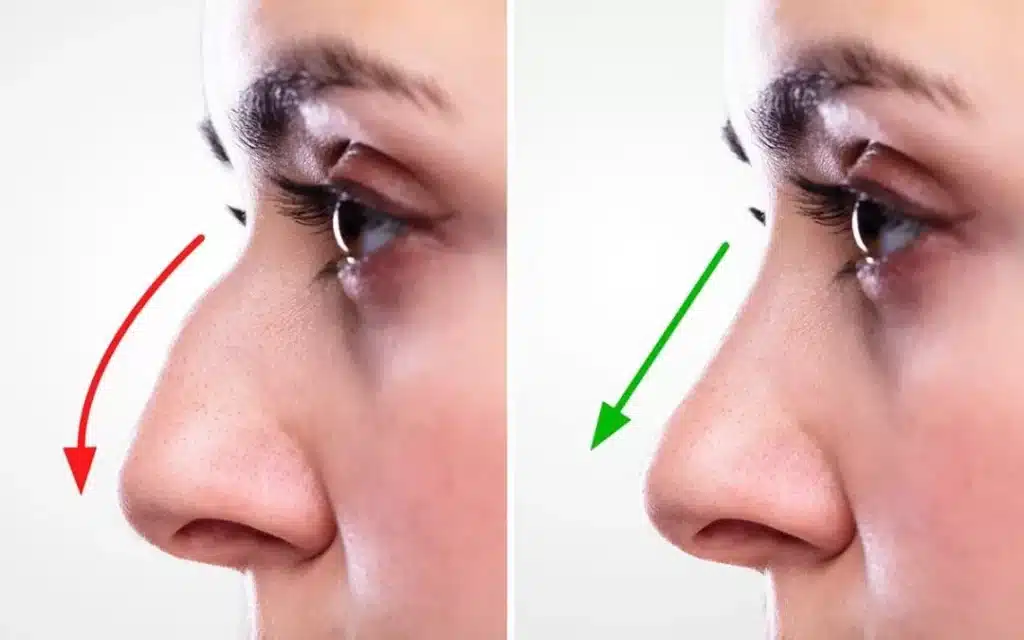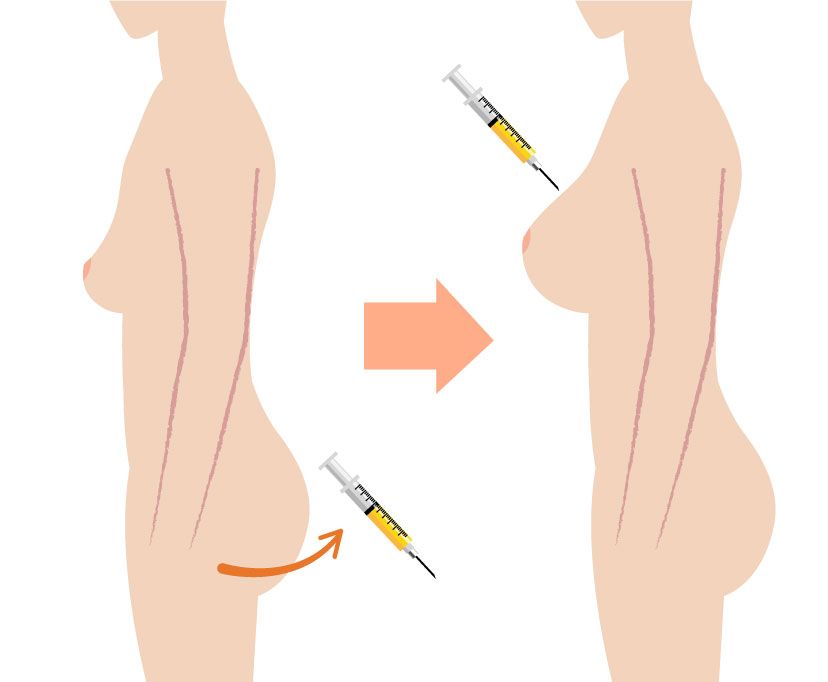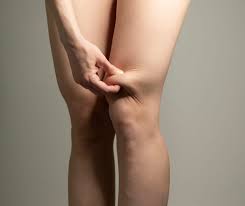Did you know that over 300,000 liposuction procedures are performed each year in the U.S.? Liposuction with fat transfer for volume restoration is gaining popularity. This technique not only removes unwanted fat with a small liposuction cannula but also uses it for lip fillers and facial implants to enhance other areas of the body.
It’s a two-in-one solution that gives patients a slimmer figure and added volume where they want it most. Whether it’s for fuller breasts or a rounder butt, this method can achieve natural-looking results. Patients appreciate the dual benefits and less downtime compared to traditional methods. Discover how this innovative approach, including fat transfer surgeries and facial fat grafting with harvested fat, can transform your body and boost your confidence.
Key Takeaways
- Fat transfer is a procedure that uses your body fat to restore volume in areas like the face, breasts, and buttocks, enhancing your natural appearance.
- This technique, also known as autologous fat grafting, offers a dual benefit: it removes unwanted fat from certain areas while enhancing volume in others.
- Ideal candidates for fat transfer are those with sufficient body fat and realistic expectations about the outcomes; consult with a qualified professional to determine your suitability.
- The procedure involves liposuction to collect fat, followed by injection into targeted areas, making it a minimally invasive option for volume restoration.
- Benefits include natural-looking results and minimal risk of allergic reactions since the fat comes from your own body; however, it’s essential to discuss potential risks with your doctor.
- Post-procedure care is crucial for effectiveness; follow your surgeon’s aftercare instructions to ensure optimal results and longevity of the transferred fat.
What is Fat Transfer
Definition
Fat transfer involves removing fat from one area of the body. This fat is then injected into another area that needs volume restoration. The process uses the body’s own fat, making it a natural option for many people.
Purpose
The main aim of fat transfers is to enhance or restore volume in specific areas. Common areas targeted include the face, breasts, and buttocks. Many individuals seek this facial fat grafting procedure to achieve a fuller look without artificial fillers.
Process Overview
The fat transfer process begins with liposuction. Surgeons first remove excess fat from a donor site. This site can be the abdomen, thighs, or hips. After extraction, they purify the fat to prepare it for injection.
Next, the purified fat is injected into the desired area. Surgeons use small needles for precise placement. This facial fat grafting technique minimizes trauma to surrounding tissues and helps achieve a smooth result.
Benefits
Using one’s own fat has several advantages. First, facial fat grafting reduces the risk of allergic reactions since the body recognizes its own tissue. Second, it provides a more natural look and feel compared to synthetic fillers.
Patients often appreciate the dual benefit of liposuction combined with fat transfer. They can eliminate unwanted fat while enhancing other areas of their body.
Recovery
Recovery from a fat transfer procedure varies by individual. Patients may experience swelling and bruising in both the donor and injection sites. These effects usually subside within a few weeks.
Surgeons typically recommend avoiding strenuous activities during recovery. Following post-operative care instructions is crucial for optimal results.
Longevity of Results
Results from fat transfers can last for several years. However, not all transferred fat survives after the procedure. Surgeons estimate that about 50-70% of the injected fat remains long-term.
Maintaining a stable weight helps preserve results. Weight fluctuations can affect the volume in both the donor and recipient areas.
Considerations
Candidates should consider various factors before undergoing a fat transfer procedure. These include overall health, skin elasticity, and realistic expectations. Consulting with a qualified surgeon is essential for personalized advice.
Surgeons will assess individual goals and discuss potential risks during consultations. Understanding these factors helps ensure satisfaction with the final outcome.
Other Names for Fat Transfer
Autologous Fat Transfer
Autologous fat transfer is a key term in the world of cosmetic procedures. This method involves taking fat from one area of the body and injecting it into another. Surgeons often use this technique for volume restoration. It allows patients to achieve a more natural look since their own fat is used.
This process helps with contouring and enhancing areas like the face, breasts, and buttocks. The fat is harvested through liposuction techniques. After collection, it undergoes processing before being injected into the desired area.
Fat Grafting
Fat grafting is another commonly used term. This phrase emphasizes the act of transferring fat from one part of the body to another. The goal remains the same: to restore volume and improve appearance.
Surgeons prefer fat grafting for its versatility. It can be applied in various areas, such as the cheeks or lips. Many patients appreciate that it uses their own tissue, reducing the risk of rejection.
Lipofilling
Lipofilling is often used in medical contexts. This term describes the same procedure but is more specific to clinical settings. Surgeons might refer to it when discussing technical aspects of the operation.
The lipofilling process involves several steps. First, doctors identify the donor site for fat removal. Next, they perform liposuction to extract the fat. Finally, they inject the processed fat into the targeted area.

Modern Liposuction Techniques
Modern liposuction techniques have improved over time. They allow for more precise fat removal and better results in transfer procedures. Methods like tumescent liposuction or laser-assisted liposuction enhance safety and recovery times.
These advancements make it easier to obtain high-quality fat for transfer. The quality of harvested fat plays a significant role in the success of autologous fat transfer.
Benefits of Fat Transfer
Fat transfer offers several benefits over synthetic fillers. It provides a natural solution without foreign substances in the body. Patients enjoy longer-lasting results compared to temporary fillers.
Using one’s own fat reduces complications related to allergies or rejections. This adds an extra layer of safety during cosmetic procedures.
Common Treatment Areas
Breasts
Liposuction with fat transfer can effectively enhance the breasts. This procedure involves removing fat from one area and injecting it into the breasts. Women often seek this for a fuller appearance. The results can look natural, as the transferred fat integrates well with existing tissue.
Buttocks
Another popular area for volume restoration is the buttocks. Many individuals desire a rounder and more lifted appearance. Fat transfer provides a way to achieve this without implants. The process uses liposuction to harvest fat from other body areas, creating a more contoured look.
Face
The face is also a common target for this cosmetic surgery. Fat transfer can restore facial volume lost due to aging or weight loss. It enhances features like lips, cheeks, and under-eye areas. This method helps in achieving a youthful appearance without the need for synthetic fillers.
Hips and Cheeks
Enhancing the hips and cheeks is another effective application of fat transfer. Many people want more defined curves or fuller cheeks. This procedure allows for natural-looking enhancements. It uses the patient’s own fat, reducing risks of rejection or allergic reactions.
Under-Eye Rejuvenation
Fat transfer is effective for under-eye rejuvenation. This area often shows signs of aging first. Hollow eyes can make someone appear tired or older than they are. Injecting fat restores volume and smooths out wrinkles, leading to a refreshed look.
Hand Wrinkle Reduction
Another benefit is in reducing hand wrinkles. Hands often reveal age but are frequently overlooked in aesthetic procedures. Transferring fat to the hands can plump them up. This treatment creates a smoother appearance and hides veins and wrinkles.
Other Facial Surgeries
This technique complements other facial surgeries well. For example, after a facelift, additional volume may be needed in certain areas. Fat transfer can provide that extra fullness while maintaining a natural look.
Facial Fillers vs. Fat Transfer
e may wonder about the difference between facial fillers and fat transfer. Fillers provide immediate results but may require regular maintenance. In contrast, fat transfer offers longer-lasting effects since it uses the body’s own tissue.
Fat transfer through liposuction serves various treatment areas effectively. It enhances breasts, buttocks, face, hips, and hands while addressing specific concerns like under-eye hollows and wrinkles.
Benefits of Fat Transfer
Natural Enhancement
Fat transfer surgery provides a natural-looking volume enhancement. This method uses the patient’s own fat tissue, making results blend seamlessly with the body. The injected fat comes from areas where excess fat deposits exist. Common donor areas include the abdomen, thighs, and flanks.
Patients often prefer this method over synthetic fillers. The reason is simple: it creates a more organic appearance. Patients enjoy the added benefit of reducing unwanted fat in one area while enhancing another.
Improved Contours
Facial fat transfer significantly improves facial contours. It fills in wrinkles and restores lost volume. Many people notice changes in their faces as they age. Sun exposure and lifestyle choices can lead to a gaunt appearance. Fat grafting surgery helps combat these effects.
The procedure also targets specific areas like cheeks and lips. By using fat injections, patients achieve a fuller look without implants or fillers. This technique offers a long-lasting solution for rejuvenation.
Reconstruction Uses
Fat transfer surgeries are not just for cosmetic purposes. They play a crucial role in reconstructive procedures. Surgeons use fat grafting to repair facial scars from accidents or surgeries. This method helps restore both function and aesthetics.
Breast reconstruction is another important application. After mastectomy, fat grafting can help rebuild breast volume. This approach allows for more natural results than traditional implants.
Recovery Insights
Fat transfer recovery time varies among patients. Most people experience swelling and bruising after the procedure. These symptoms usually subside within a few weeks. Patients should avoid strenuous activities during this period.
Following post-operative care instructions is vital for optimal fat transfer results. Proper care can enhance fat survival rates and overall satisfaction with the outcome.
Complications to Consider
Like any medical procedure, fat transfer has potential complications. Some patients may experience uneven results or loss of injected fat. In rare cases, infections or allergic reactions could occur.
Discussing these risks with a qualified surgeon is essential before proceeding with fat grafting procedures. Understanding possible outcomes prepares patients for what to expect.
Ideal Candidates
Health Status
Candidates should be close to their ideal weight. This means they should not be significantly overweight or underweight. Good health is also essential. Individuals with chronic illnesses may face complications during the procedure. A thorough medical evaluation helps ensure safety.
Fat Availability
Sufficient fat for transfer is a must. This fat comes from areas like the abdomen, thighs, or flanks. If candidates do not have enough fat, they may not qualify for the procedure. Doctors assess body composition before approval. Non-smokers are preferred since smoking can hinder healing.
Expectations
Desiring natural results is crucial for candidates. They should understand that liposuction with fat transfer enhances volume but does not create dramatic changes. Realistic expectations lead to higher satisfaction rates. Candidates often benefit from consultations where they can discuss their goals.
Procedure Overview
Fat Harvesting
The procedure begins with liposuction. This technique removes fat from specific areas of the body. Common donor sites include the abdomen, thighs, and flanks. A surgeon uses a thin tube called a cannula to extract fat. They make small incisions in the skin to insert the cannula. The fat is then suctioned out using a vacuum device.
Patients often prefer this method because it reduces unwanted fat in certain areas. It also allows for a more sculpted appearance. Many individuals feel more confident after losing excess fat.
Fat Processing
After harvesting, the next step is purifying the extracted fat. Surgeons place the fat into a centrifuge. This machine spins rapidly to separate impurities and excess fluids. The result is a concentrated amount of viable fat cells.
This purification process is crucial for successful volume restoration. High-quality fat leads to better results when injected into target areas. Surgeons must ensure that only healthy fat cells are used for transfer.
Volume Restoration
The final stage involves injecting the purified fat into desired areas of the body. Common sites include the face, breasts, and buttocks. Surgeons use fine needles or cannulas for precise placement.
Injecting fat helps restore lost volume effectively. It can enhance facial features or create fuller breasts and shapelier buttocks. Patients often appreciate the natural look and feel of transferred fat compared to synthetic fillers.
Surgeons typically perform this procedure under local anesthesia or sedation. Recovery time varies but is generally shorter than traditional surgery methods.
Benefits
Liposuction with fat transfer offers several advantages:
- Natural Results: Using your own fat reduces risks of rejection.
- Dual Purpose: It eliminates unwanted fat while enhancing volume elsewhere.
- Minimal Scarring: Small incisions lead to less visible scars.
Many patients report satisfaction with their results after recovery. They enjoy improved contours and enhanced features.
Considerations
While this procedure has many benefits, it also requires careful consideration. Not everyone is an ideal candidate for liposuction with fat transfer. Individuals should discuss their health history with their surgeon beforehand.
Potential risks include infection, uneven results, or absorption of transferred fat. Understanding these factors is essential before proceeding.
Effectiveness and Longevity
Natural Results
Surgeons achieve natural-looking results with liposuction and fat transfer. Skilled professionals know how to place grafts effectively. This technique helps restore facial volume lost due to aging. Patients often enjoy a more youthful appearance after the procedure.
The process involves removing fat from one area of the body. Surgeons then inject this fat into areas needing volume, such as the cheeks or lips. The results can look very natural when done correctly. Many patients report satisfaction with their enhanced features.
Fat Cell Survival
Permanent results are possible with this method. However, not all transferred fat cells survive after the procedure. Studies show that about 50-70% of the injected fat may remain long-term. The remaining cells may be absorbed by the body or die off.
Surgeons select healthy fat cells for transfer. These cells have a better chance of survival. Factors like surgical technique and post-operative care also play a role in success. Following recovery guidelines can help maintain optimal results.
Timeline for Results
Patients typically see final results about six months after surgery. Initial swelling may obscure the true outcome right away. As swelling decreases, the new facial contours become clearer.
During this time, some patients may worry about changes in volume. It’s important to remember that this is part of the healing process. The body needs time to adjust and settle into its new shape.
Aging Considerations
Aging affects everyone differently. Some people lose facial volume faster than others. This can lead to sagging skin and wrinkles. Liposuction with fat transfer offers a solution for those seeking rejuvenation.
The procedure does not stop aging but can significantly improve appearance. Many choose it as part of an overall anti-aging strategy. Combining this treatment with other options, like fillers or Botox, enhances results further.
Safety Considerations
Experienced Surgeons
Liposuction with fat transfer is safe when performed by an experienced plastic surgeon. Surgeons must have specific training in body contouring techniques. Their expertise helps ensure a smooth procedure and recovery. Patients should seek board-certified surgeons. They typically have extensive experience and knowledge of safety protocols.
Choosing the right surgeon reduces risks associated with the surgery. Look for reviews and before-and-after photos. These resources provide insight into a surgeon’s skill level. Consultations are essential to discuss individual goals and concerns. They also allow patients to assess the surgeon’s communication style and professionalism.
Skill Requirements
This procedure requires high skill to minimize risks and complications. The surgeon must understand anatomy well. They need to know how to handle fat transfer effectively. Precision is crucial in both liposuction and fat injection stages. Poor technique can lead to uneven results or complications.
Surgeons should use advanced technology during the procedure. Tools like ultrasound-assisted liposuction can enhance safety. These tools help in targeting fat more accurately, which can reduce trauma to surrounding tissues.
Potential Risks
As with any surgery, potential risks exist and should be discussed with a doctor. Common risks include infection, bleeding, and anesthesia complications. Patients may also face issues like contour irregularities or fat necrosis. Fat necrosis occurs when transferred fat does not survive in its new location.
Patients must understand these risks before proceeding. A thorough pre-operative consultation is crucial for informed decision-making. Surgeons should explain all possible outcomes, including best-case scenarios and worst-case situations.
Recovery Process
Post-operative care plays a significant role in safety. Doctors provide specific instructions on recovery steps. Following these guidelines helps minimize complications. Patients might experience swelling or bruising after the procedure. These effects are normal but should be monitored closely.
Rest is vital during the recovery phase. Patients should avoid strenuous activities for several weeks. This allows the body to heal properly and improves final results.
Closing Thoughts
Liposuction with fat transfer is a game-changer for volume restoration. This procedure not only enhances your body contours but also uses your own fat, making it a natural choice. With benefits like improved shape and minimal downtime, it’s no wonder many are turning to this option.
If you’re considering this treatment, consult with a qualified professional. They can guide you through the process and help ensure you achieve the results you desire. Take the first step towards your transformation today!
Frequently Asked Questions
What is fat transfer?
Fat transfer is a cosmetic procedure that uses liposuction to harvest fat from one area of the body and injects it into another area for volume restoration.
How long does fat transfer last?
The results of fat transfer can last several months to years, depending on factors like the area treated and individual metabolism.
Who are ideal candidates for fat transfer?
Ideal candidates are those with sufficient body fat for harvesting and realistic expectations about the outcomes of the procedure.
Is fat transfer safe?
Fat transfer is generally considered safe when performed by a qualified surgeon. However, like any procedure, it carries risks such as infection or uneven results.
Can fat be transferred to any area of the body?
Yes, fat can be transferred to various areas including the face, breasts, and buttocks for added volume and contouring.
What are the benefits of fat transfer?
Fat transfer offers natural-looking results, reduces unwanted fat in donor areas, and enhances volume in targeted areas without synthetic fillers.
How is recovery after a fat transfer procedure?
Recovery typically involves some swelling and bruising. Most patients return to normal activities within a week but should avoid strenuous exercise for a few weeks.











